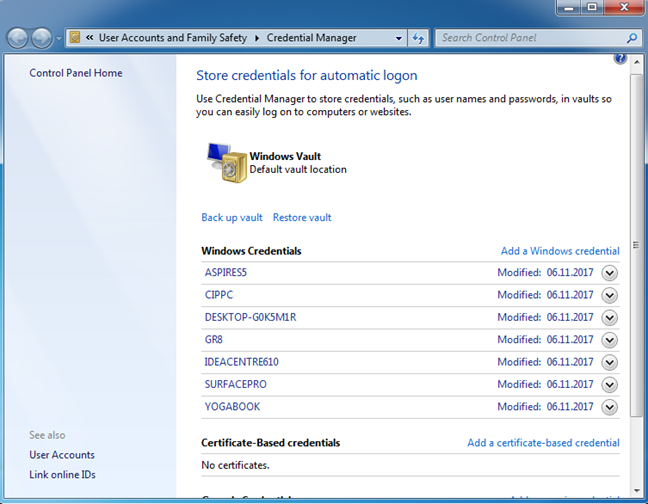
There may be an issue with your Windows user or the operating system.

If this does not resolve this issue, please see your office's hardware technician, IT, or computer manufacturer for further assistance.Between each reboot, check Credential Manager for saved credentials and by browsing to a shared folder on your network. Click the arrow next to the account you want to view. Both options are at the top of the window. Click Web Credentials or Windows Credentials. Fill in the fields and click OK to save. To do this, type credential into the Windows search bar, and then click Credential Manager in the search results.Click on Windows Credentials and then Add a Windows credential. The Windows Credential Manager feature in Windows 10 will help users to better manage their passwords and other sensitive information across both web and Windows login credential.Scroll down and locate the Vault folder, then right mouse click and Delete this directory. Open File Explorer and type %ProgramData%\Microsoft into the Address bar and press Enter.



The Web Credentials store login information for portals and websites you connect to through Microsoft products, such as Internet Explorer and Microsoft Edge. Let's explore what information each credential saves and how you can manage your passwords for each category. The built-in Credential Manager in Windows can save two types of credentials: Web Credentials and Windows Credentials. The Types of Credentials Credential Manager Can Save


 0 kommentar(er)
0 kommentar(er)
